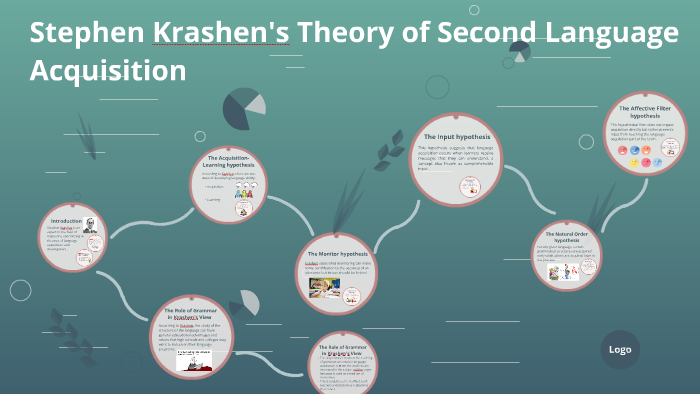Krashen's Five hypotheses for English language Teaching. Explained in understandable English.
Hello, my beloved fellow reader, Today, I have tried to explain Krashen's 5 hypotheses for Second Language Acquisitions (SLA). So many of you asked me to write about the theories and applications in English Language Teaching especially Communicative language teaching approaches. Here is the first part of the series. Starts with Krashen's hypotheses.
Before we going to start we have to understand what he meant as comprehensible input? how can we do it or approach it?

Comprehensible input is the language that is slightly beyond the learner's current level of understanding. According to Stephen Krashen's Input Hypothesis, it is the key to language acquisition.
When learners are exposed to comprehensible input, they are able to figure out the meaning of the language through context, inference, and repetition. This process of figuring out the meaning of language is called "inductive learning."

Comprehensible input can be found in a variety of forms, including:
- Listening to stories: Listening to stories is a great way to get comprehensible input because the story provides context and helps learners to infer the meaning of new words and phrases.
- Watching movies: Watching movies is another great way to get comprehensible input. Movies provide visual context, which can help learners to understand the meaning of new words and phrases.
- Reading: Reading is a great way to get comprehensible input, but choosing texts slightly beyond the learner's current level is important.
- Having conversations with native speakers is a great way to get comprehensible input. Native speakers can provide learners with feedback and help them to correct their mistakes.
It is important to note that comprehensible input means that learners can only understand some things they hear or read. In fact, it is more effective if learners only understand about 75% of the input. This allows them to use context and inference to figure out the meaning of the remaining 25%.
If learners are exposed to comprehensible input on a regular basis, they will gradually acquire the language. This process may take time, but it is the most effective way to learn a second language.
Here are some additional tips for providing comprehensible input:
- Use visuals: Visuals can help learners to understand the meaning of new words and phrases. For example, you could show a picture of a cat when you are talking about cats.
- Simplify the language: You can simplify the language by using shorter sentences, more straightforward vocabulary, and slower speech.
- Repeat the input: Repeating the input gives learners a chance to hear it again and figure out the meaning.
- Provide context: Provide context by giving learners information about the setting, the characters, and the plot. This will help them to understand the meaning of the input.
- Be patient: It takes time for learners to acquire a second language. Be patient and provide them with opportunities to practice.
Stephen Krashen is a linguist who developed a theory of second language acquisition that is based on five hypotheses:
- The Acquisition-Learning Hypothesis states that two distinct processes are involved in learning a second language: acquisition and learning. Acquisition is the subconscious process of absorbing a language through exposure, while learning is the conscious process of studying the rules and grammar of a language.
- The Monitor Hypothesis states that the learner's conscious knowledge of grammar can be used as a "monitor" to correct errors in speech or writing. However, the monitor could be more effective for spontaneous communication, and it is only used when the learner has time to think about what they are saying.
- The Input Hypothesis states that language acquisition occurs when learners are exposed to comprehensible input, which is language that is slightly beyond their current level of proficiency. This input provides learners with the information they need to figure out the rules of the language without being explicitly taught them.
- The Affective Filter Hypothesis states that learners' emotional state can affect their ability to acquire a second language. When learners feel anxious, stressed, or afraid, the affective filter is raised, making it more difficult for them to understand and process new language input.
- The Natural Order Hypothesis states that there is a natural order in which learners acquire grammatical structures. This order is not affected by the learner's age, native language, or amount of instruction.
Here are some examples of how Krashen's theories can be applied in the classroom:
- The Acquisition-Learning Hypothesis suggests that teachers should focus on providing learners with opportunities for comprehensible input. This can be done through activities such as listening to stories, watching movies, or having conversations with native speakers.
- The Monitor Hypothesis suggests that teachers should not focus on teaching grammar rules in isolation. Instead, grammar should be taught in the context of comprehensible input. This will help learners to see how grammar is used in real-life communication.
- The Input Hypothesis suggests teachers should create a positive and supportive learning environment. This will help learners to feel comfortable making mistakes and taking risks.
- The Affective Filter Hypothesis suggests that teachers should be aware of the emotional state of their learners. If learners are feeling anxious or stressed, the teacher can take steps to reduce their anxiety and create a more relaxed learning environment.
- The Natural Order Hypothesis suggests that teachers should not try to force learners to learn grammatical structures beyond their current proficiency level. Instead, teachers should focus on providing learners with comprehensible input that is slightly beyond their current level.
Krashen's theories have been influential in the field of second language acquisition, and they continue to be used by teachers and researchers today.

Comments
Post a Comment